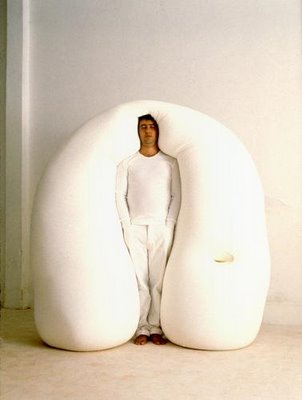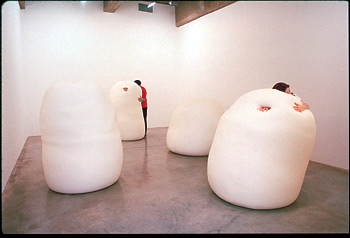If you’re new here, you may want to subscribe to my RSS feed to receive the latest Architectradure’s articles in your reader or via email. Thanks for visiting!
An announcement for the good cause. I know how hard it is to find a great PhD in a field that you love! Here is a call for an international PhD studentship in tectonic textiles between the Centre for IT and Architecture at the Royal Danish Academy of Fine Arts, School of Architecture, and the Textiles Future Research Group, Central Saint Martins, College of Art and Design.
The position will be based in both research environments so as to make full use of the expertise and equipment available. The applicant will be expected to move between the institutions placed in Copenhagen and London, respectively. The position is offered as a 3-year contract under the regulations of the Danish Ministry of Finance and the Danish Federation of Professional Associations, AC.
This Ph.D. application will be administerd by CITA.
Click ->here<- for further information
The deadline for application is 23 May 2008. Material received by CITA after this time will not be taken into account.
A bit of research context for the studentship
The last decade has seen an extensive development in the textile industry. The invention of new high technology fibres and yarns as well as new fabrication techniques for weaving, knitting, pleating, welding or laminating of materials, is causing an increase in the use of textiles across multiple disciplines. From the miniature detailing of knitted arteries inserted into the body to the extreme scales of geotextiles, textiles are entering new fields of fabrication, hybridising existing technologies and inventing new ones. In architecture, the metaphor of textiles is increasingly informing design practice. Whereas textiles have always been used in tensile structures and within the interior, the idea of weaving, pleating or knitting a building is challenging traditional construction techniques. The idea of a curtain wall, an independent and self-supporting membrane of steel and glass that wraps around the building, is now being explored through the metaphor of fabric.
One of the key developments in this technological innovation has been the emergence of smart textiles, or intelligent textiles, that embed digital technology in woven, pleated or knitted surfaces. These materials enable wiring or circuitry to become a direct part of the material. Intelligent clothes, wearables and soft computing are research fields that have been receiving huge amounts of international interest during the last decade. The use of conductive threads and fabrics and the embroidery of standard electronic components as well as stand-alone microprocessors have allowed the imagining of a material that holds its own capacity for sensing and actuation. Here, state-changes: the intensification of colour, the emergence of light or the stirring of movement, allow the material itself to become a reactive surface that engages with its occupant or wearer. These materials have mostly had their application in the development of smart uniforms for the military, but have also lead to more experimental and probing explorations allowing for a new conditioning of technology as something soft, pliable, adaptive and mobile. Questioning the idea of a fixed user behind a standard terminal within a rigid office environment, these investigations propose a flexible technology that ultimately is ported and changed by its usage.
The International PhD Studentship will focus on the siting of these technologies within an architectural research context. Investigating the embedding of soft technology within the interior, the project will seek to define new means by which a dynamic and user-controlled architecture can be imagined. It is the intention that the candidate will work in a practice-based and experimental manner where direct experience and engagement with materials and technologies will create the foundation for innovative research.
















